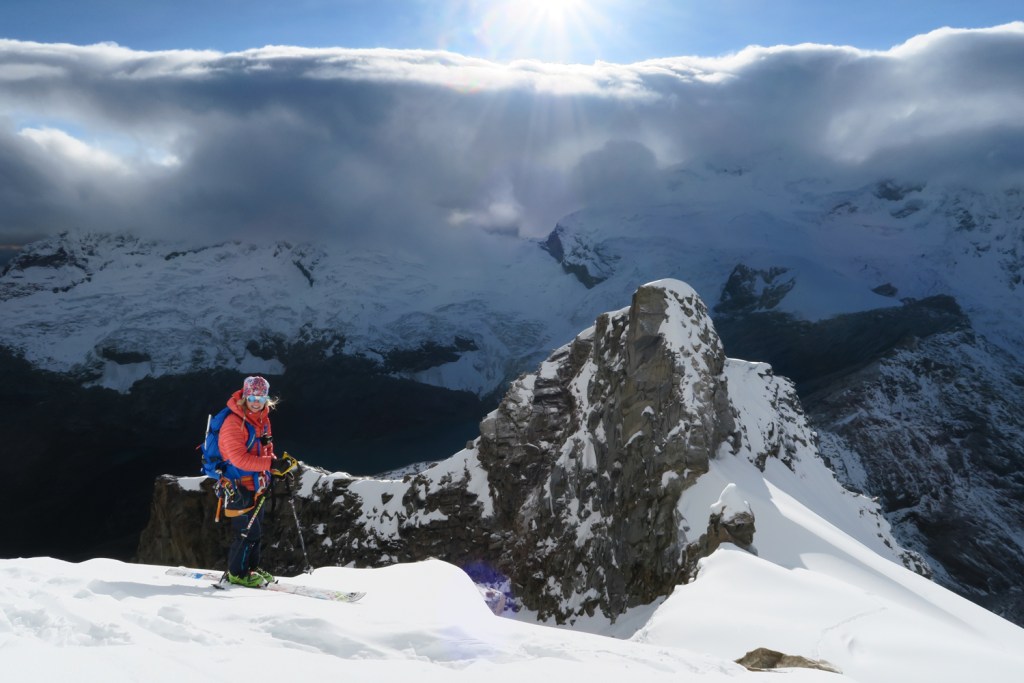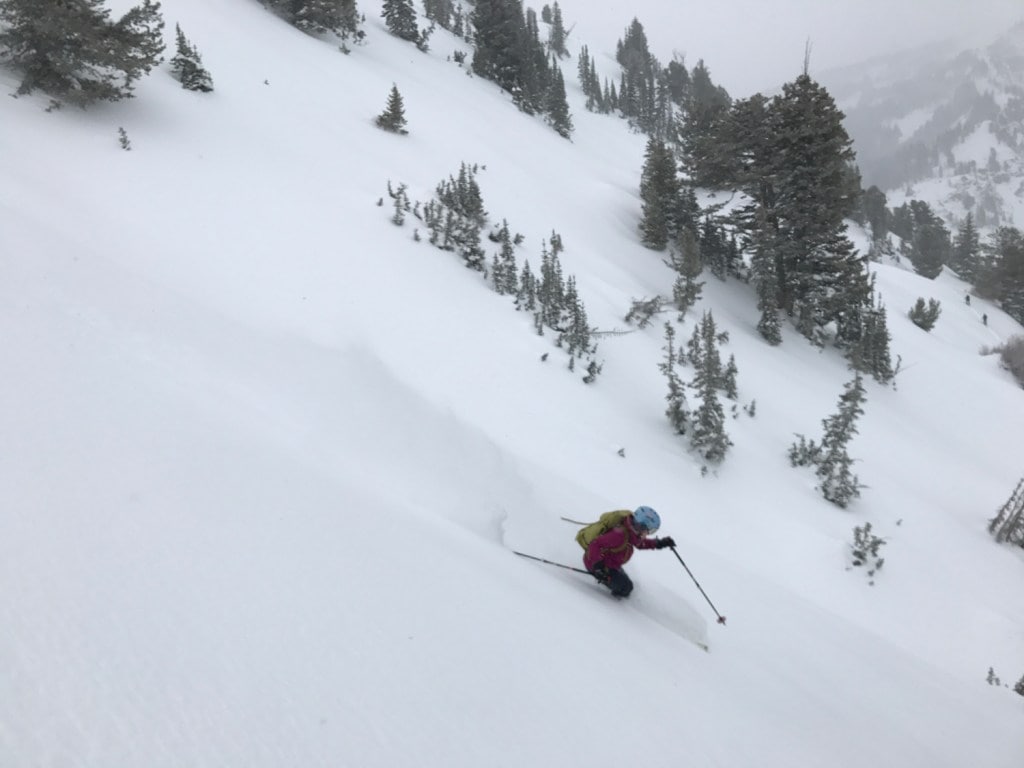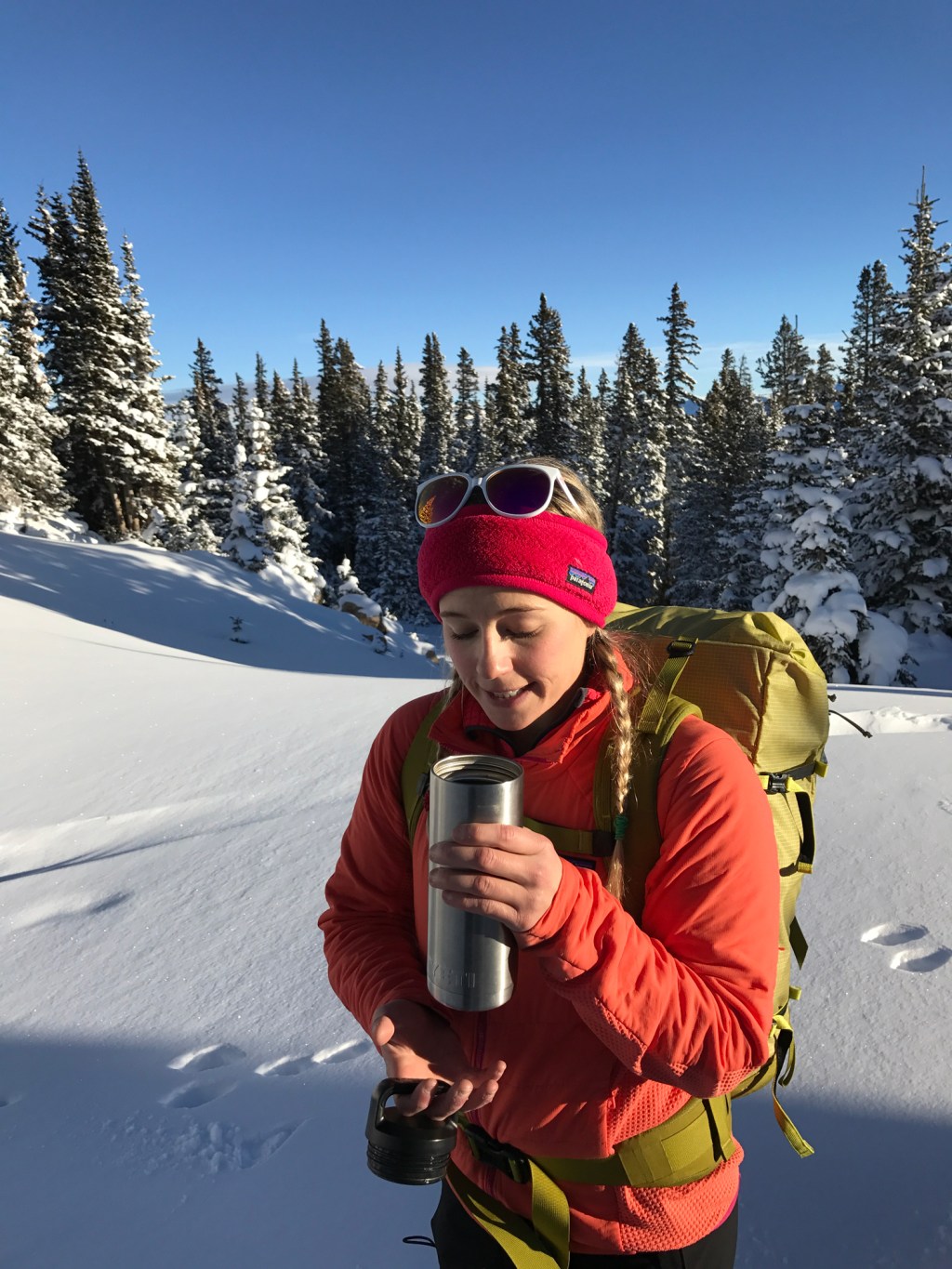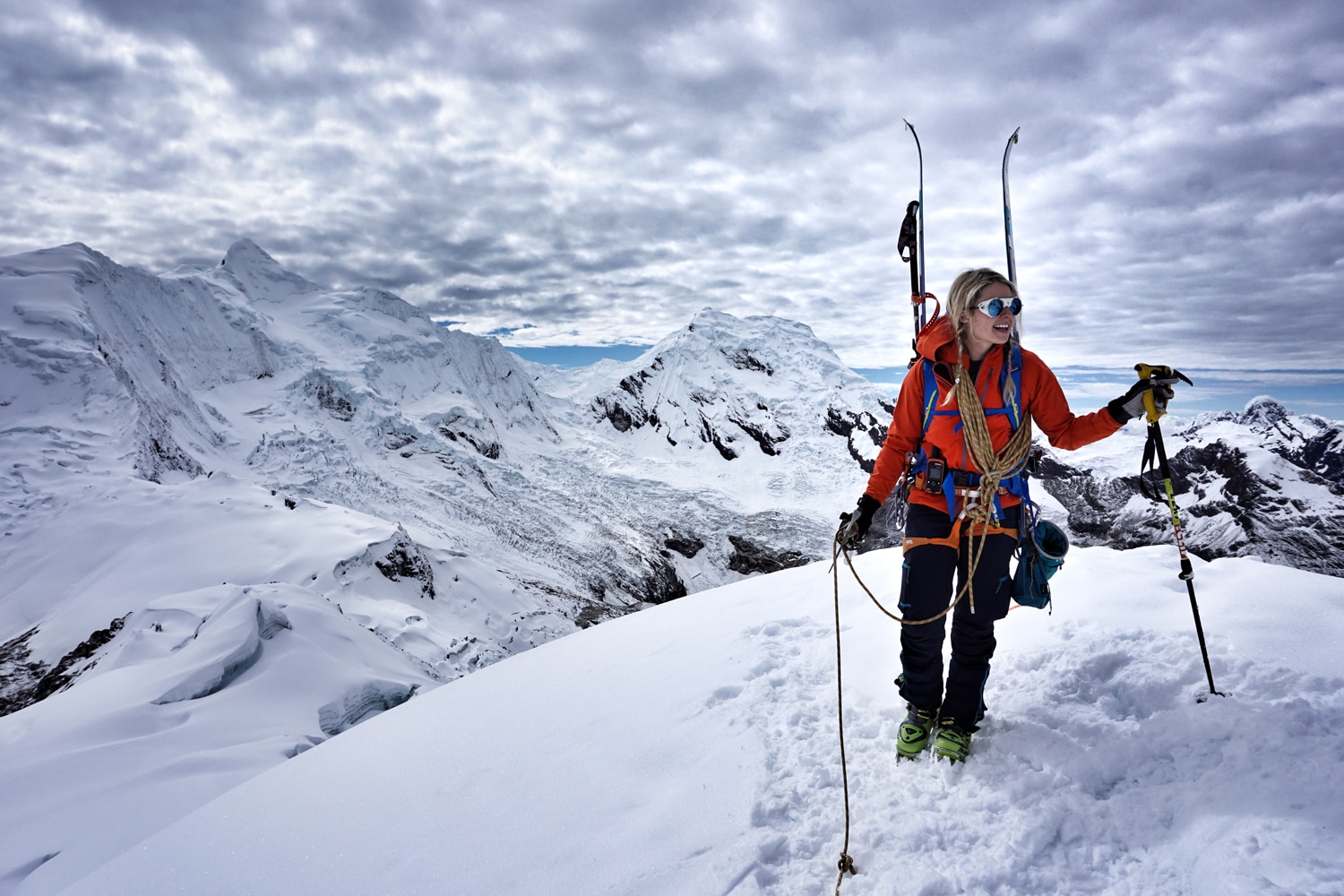Over the past 12 years of my career as a professional snowsports athlete and ski mountaineer, I’ve spent countless long days outside in bitter cold temperatures. Some jobs and tasks keep me on my toes and moving quickly, but often I am stuck in one place for long stretches while I coach, teach, work a ski demo, take an avalanche safety course, etc. A big part of my job requires me to stay outside from dawn to dusk, working with videographers and photographers and waiting for just the right moment to get the perfect shot for films and sponsors. Inevitably, I’ve learned a few things about staying warm in the mountains in winter. Here are a few of my tips:
Understand the effects of wind on temperature.
Chilly days will feel downright frigid once the wind picks up. It’s important to know the signs of hypothermia so you can recognize the symptoms in your friends and in yourself. One of my wilderness medicine instructors described a person in the early stages of hypothermia as having the “umbles”—he or she mumbles, grumbles and fumbles. I’ve found this to be helpful on numerous occasions. If you start to feel sluggish or uncoordinated, or just don’t feel like talking much on a cold day, it’s time to “eat it and beat it,” as the same instructor also said. Get some food in your stomach and keep on moving.

Give your toes a little bit of wiggle room.
I used to always fit my ski boots as tight as possible for maximum performance. After years of having frost-nipped toes, however, I changed my mind. Now, when I’m selecting boots for backcountry endeavors, whether it’s ice climbing or ski touring, I size up a half or even a full size; the wiggle room helps keep the blood circulating throughout my extremities.
Start warm, stay warm.
One of my favorite tricks is to keep my boots warm under the car floor heater as I make my way to the resort or trailhead. I make it a point to keep them cozy and dry until the moment I have to put them on. For me, starting with warm, dry boots is a key ingredient to a happy day in the mountains.
Being dry is the goal.
Whether you finish your day back at home or out in the backcountry, drying out your gear has got to be a top priority. First and foremost, remove your boot liners. Unload backpacks so skins and other items have time to thaw. If you’re winter camping, sleep with your liners and other essential items in your sleeping bag so they dry overnight. If you’re in a hut, hang up everything near the stove, but be careful to leave enough space between your gear and the fire, as too much heat can have disastrous effects on most materials.
Pack a little heat.
On really cold days, having disposable or reusable hand, toe and body warmers is one of the best presents you can give yourself. It’s almost as good as snuggling a puppy. Keep an extra set in your pack, if you can. Thanks to these little gems, you’ll be better able to use your hands and fingers to keep eating and drinking, crucial to preventing hypothermia. They also work well to keep cellphone or other batteries charged. Sometimes I’ll even stick a toe warmer right on my cellphone case, as batteries die quickly in the cold.
Mind the gap.
Even the tiniest speck of frostbite can ruin a perfectly good day in the mountains. For cold downhill runs, I definitely recommend wearing a balaclava; it closes the space between your helmet and jacket, keeping cold air from getting in. I like to use the thinner facemasks rather than the thick ones because they dry faster and don’t ice up when they get wet. I also like to wear a headband under my helmet to keep my ears warm.

Join the hot lunch program.
You will be the envy of all your ski buddies if you keep an insulated bottle or flask containing a hot drink in your pack. Better yet, consider bringing an insulated container of soup for lunch. Nothing is worse than trying to drink almost-frozen water when you are almost frozen yourself. Having a hot drink or hot lunch is key to keeping morale high on a cold, winter day. If I’m planning to do a multiday ice climbing or avalanche course, I’ll often make a big batch of soup the day before it starts so I have something warm and delicious to pack in my lunch all week. It sure beats a frozen sandwich!

It’s all about the layers.
Start with a thin, insulating base layer next to your skin and then stack on top of that. Avoid cotton as a base layer: It takes forever to dry and will leave your skin feeling cold and clammy once you start to sweat. Choose wool or synthetic instead. I prefer to bring a variety of lighter layers instead of one big, insulated jacket so I have more options as I move between elevations and climates on long ski tours. I like a mid layer to be a very light, breathable jacket that I can wear on the uphill. I can wear a shell over my mid layer, and I always throw an ultra-lightweight puffy jacket in bag so I have something to keep me extra warm in case of an emergency.
Don’t let cold temperatures keep you from getting outside. Sure, staying warm in winter takes a bit of work, but having a few tricks up your sleeve makes it far easier and more enjoyable.
This does not constitute formal instruction. Winter travel is a dangerous activity and you undertake it at your own risk.
